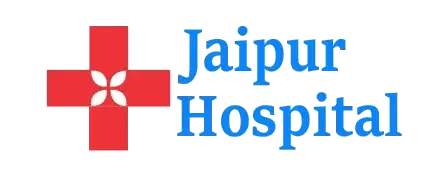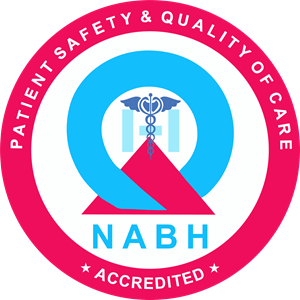Introduction
A stroke, often referred to as a “brain attack,” is a medical emergency that occurs when blood flow to the brain is interrupted or reduced, depriving brain tissue of oxygen and nutrients. This can result in the rapid death of brain cells. As one of the leading causes of disability and death worldwide, understanding the various aspects of stroke is crucial. In this discussion, we will delve into the types of strokes, their causes, risk factors, symptoms, diagnosis, treatment options, and rehabilitation strategies. Additionally, we will explore the importance of stroke prevention and the latest advancements in stroke research and management. Understanding these topics is fundamental in both the prevention and treatment of this debilitating condition.
Types of Stroke:
A stroke, often referred to as a “brain attack,” is a medical emergency that occurs when blood flow to the brain is interrupted or reduced, depriving brain tissue of oxygen and nutrients. This can result in the rapid death of brain cells.
Strokes can be classified into two main types: ischemic stroke and hemorrhagic stroke.
- Ischemic Stroke: This type of stroke occurs when a blood clot or a plaque blocks or plugs a blood vessel in the brain, cutting off the blood supply to a part of the brain. Ischemic strokes account for approximately 87% of all stroke cases and can be further divided into two subtypes:
- Thrombotic Stroke: This occurs when a blood clot (thrombus) forms in one of the arteries supplying blood to the brain. The clot usually forms in an area already narrowed by atherosclerosis.
- Embolic Stroke: An embolic stroke occurs when a blood clot or other debris forms in a blood vessel away from the brain, commonly the heart, and travels through the bloodstream to lodge in a narrower brain artery.
- Hemorrhagic Stroke: This type of stroke occurs when a weakened blood vessel ruptures and bleeds into the surrounding brain tissue. Hemorrhagic strokes can be further divided into two subtypes:
- Intracerebral Hemorrhage: This occurs when a blood vessel in the brain bursts and spills into the surrounding brain tissue, damaging cells and causing pressure on the brain.
- Subarachnoid Hemorrhage: This occurs when there is bleeding in the space between the brain and the surrounding membrane (subarachnoid space) due to a ruptured blood vessel, often caused by an aneurysm.
Symptoms of Stroke
Recognizing the symptoms of a stroke is crucial for seeking immediate medical attention. The most common signs and symptoms of a stroke can be remembered with the acronym FAST:
- F – Face Drooping: One side of the face may droop or become numb. When the person smiles, the smile may appear uneven.
- A – Arm Weakness: One arm may become weak or numb. When the person raises both arms, one arm may drift downward.
- S – Speech Difficulty: Speech may become slurred or difficult to understand. The person may be unable to speak or have trouble understanding speech.
- T – Time to Call Emergency Services: If you or someone else is experiencing any of these symptoms, it is essential to seek immediate medical attention. Time is critical.
In addition to the FAST acronym, here are some other symptoms that might occur with a stroke:
- Sudden numbness or weakness of the face, arm, or leg, especially on one side of the body
- Sudden confusion, trouble speaking, or difficulty understanding speech
- Sudden trouble seeing in one or both eyes
- Sudden trouble walking, dizziness, loss of balance, or lack of coordination
- Sudden severe headache with no known cause
Causes of Stroke
Here are the causes of stroke, including both ischemic and hemorrhagic strokes:
Ischemic Stroke Causes:
- Atherosclerosis: Buildup of fatty deposits (plaques) in the arteries supplying blood to the brain.
- Clotting Disorders: Conditions that promote blood clotting, such as thrombophilia, can lead to the formation of clots in the blood vessels, resulting in a stroke.
- Atrial Fibrillation: Irregular heartbeat can cause blood clots to form in the heart, which can travel to the brain, causing a stroke. This risk is especially increased when atrial fibrillation occurs due to conditions like sleep apnea.
- Heart Defects: Abnormalities in the heart’s structure, such as atrial septal defect (ASD) or ventricular septal defect (VSD), can increase the risk of blood clots forming in the heart and traveling to the brain.
Microvascular Ischemic Disease: Blockage of smaller blood vessels in the brain, which can result from conditions such as diabetes and hypertension.
Hemorrhagic Stroke Causes:
- High Blood Pressure (Hypertension): Prolonged or severe hypertension can weaken blood vessel walls, making them more prone to rupture and causing bleeding into the brain.
- Brain Aneurysms: Weakening and ballooning of blood vessels in the brain, which can rupture and cause bleeding into the brain.
- Brain Tumors: Both primary brain tumors and metastatic tumors from other parts of the body can cause hemorrhagic stroke.
- Diseases Affecting Blood Vessels: Diseases that weaken or cause unusual changes in blood vessels in the brain, such as Moyamoya disease, can increase the risk of hemorrhagic stroke.
Also read: Kidney Stones: Causes, Symptoms, Diagnosis & Treatment
How does Stroke Affect?
A stroke affects your body by depriving part of your brain of its blood supply, akin to a heart attack affecting your heart. During a stroke, a portion of your brain loses its blood supply, resulting in an oxygen deficit. Without oxygen, the affected brain cells become starved and cease to function properly.
If your brain cells remain without oxygen for too long, they will die. If a sufficient number of brain cells in a particular area die, the damage becomes permanent, and you may lose the abilities controlled by that area. However, restoring blood flow may prevent or at least limit this type of damage. That’s why time is critical in treating a stroke.
Diagnosis of Stroke
Diagnosing a stroke promptly is crucial for determining the appropriate treatment and minimizing potential brain damage. When a healthcare provider suspects a stroke, the following tests are commonly conducted:
- Computerized Tomography (CT) Scan: A CT scan of the head is often the first test performed when a stroke is suspected. It can help determine whether the stroke is ischemic (caused by a blood clot) or hemorrhagic (caused by bleeding in the brain). This test can quickly identify if there is a blockage or bleeding in the brain.
- Lab Blood Tests: Various blood tests are conducted to check for signs of infection, heart damage, clotting ability, and blood sugar levels. These tests also evaluate how well the kidneys and liver are functioning. Blood tests can help rule out other possible causes of symptoms, such as an infection or an electrolyte imbalance.
- Electrocardiogram (ECG or EKG): An ECG is performed to check the heart’s electrical activity and rhythm. This test helps determine whether a heart issue is the source of the problem, especially if atrial fibrillation is suspected.
- Magnetic Resonance Imaging (MRI) Scans: MRI scans provide detailed images of the brain and can show changes that occur during a stroke. An MRI can provide more detailed information than a CT scan and can be used to distinguish between ischemic and hemorrhagic strokes, as well as to determine the location and extent of the damage.
- Electroencephalogram (EEG): An EEG may be used less frequently, but it can be useful in ruling out seizures or related problems.
- Carotid Ultrasound: This test is sometimes performed to assess the blood flow in the carotid arteries, which are located on each side of your neck and supply blood to your brain. Ultrasound can show narrowing or blockages caused by plaque buildup (atherosclerosis).
- Cerebral Angiography: This imaging test may be performed in some cases to look for blockages or narrowing of blood vessels in the brain. It involves injecting a dye into the blood vessels to make them visible on X-rays.
Treatment of Stroke
The treatment of a stroke depends on whether it is an ischemic stroke (caused by a blood clot) or a hemorrhagic stroke (caused by bleeding in the brain). Immediate medical attention is crucial for both types of stroke. Here are the common treatment approaches:
Ischemic Stroke:
- Intravenous Thrombolysis (IV tPA): Tissue plasminogen activator (tPA) is a medication that can dissolve blood clots and restore blood flow to the affected area of the brain. It is most effective if given within 4.5 hours of the onset of stroke symptoms. Not everyone is a candidate for this treatment, as it carries some risks, particularly bleeding in the brain.
- Mechanical Thrombectomy: This procedure involves the use of a catheter with a clot retrieval device to physically remove the clot causing the stroke. It is typically used for larger clots in larger blood vessels. Mechanical thrombectomy is usually performed within 6 hours of symptom onset, but in some cases, it can be extended up to 24 hours.
- Antiplatelet Medications: Medications such as aspirin or clopidogrel may be prescribed to prevent the formation of new blood clots.
- Anticoagulants: These medications, such as warfarin or direct oral anticoagulants (DOACs), may be prescribed to prevent blood clots from forming. They are typically used in cases of atrial fibrillation.
- Blood Pressure Management: Controlling high blood pressure is crucial for reducing the risk of another stroke. Medications may be prescribed to help lower blood pressure.
- Cholesterol-lowering Medications: Statins may be prescribed to help lower cholesterol levels and reduce the risk of future strokes.
- Rehabilitation: Physical therapy, occupational therapy, speech therapy, and other types of rehabilitation may be needed to help stroke survivors regain lost skills and learn new ways of performing daily activities.
Hemorrhagic Stroke:
- Surgical Intervention: Surgical treatments may be necessary to repair blood vessel abnormalities or reduce pressure on the brain caused by bleeding. Surgical procedures may include aneurysm clipping, coiling, or arteriovenous malformation (AVM) removal.
- Blood Pressure Management: Controlling high blood pressure is crucial for preventing further bleeding. Medications may be prescribed to help lower blood pressure.
- Anti-seizure Medications: Medications may be prescribed to prevent seizures, which are a possible complication of hemorrhagic stroke.
- Rehabilitation: Similar to ischemic strokes, rehabilitation may be necessary to help survivors recover lost skills and learn new ways of performing daily activities.
Conclusion
At Jaipur Hospital, we understand the urgency and seriousness of stroke care. As the Best Cardiology Hospital, we are committed to providing immediate and comprehensive treatment to all stroke patients. Our state-of-the-art facilities and experienced medical team ensure that every patient receives the highest quality of care. With advanced diagnostic tools and a dedicated stroke unit, we can promptly diagnose and effectively treat both ischemic and hemorrhagic strokes. Our multidisciplinary approach, including the latest in interventional techniques and rehabilitation services, ensures the best possible outcomes for stroke survivors. If you or someone you know is experiencing stroke symptoms, trust Jaipur Hospital for expert, compassionate care. Your well-being is our priority.


